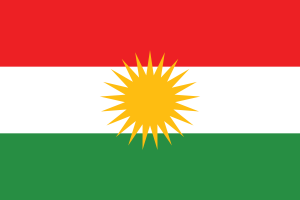Language/Central-kurdish/Vocabulary/Numbers-1-10
Learning how to count from one to ten is an essential part of mastering any language. In this lesson, we will introduce you to the Kurdish number system and help you understand basic numerical concepts.
Kurdish Number System
The Kurdish number system is based on the Indo-Arabic numerals (0, 1, 2, 3, 4, 5, 6, 7, 8, 9) and uses mostly decimal numbers. However, there are a few unique features to the Kurdish number system that may surprise you.
One of the most interesting facts about the Kurdish number system is that it includes a separate numeral for the number 10, called "یانزە" (yanzeh). This separate numeral is rarely used in modern Kurdish, but it was more common in older texts.
Another unique aspect of the Kurdish number system is that above 1000, it switches to a system that is based on powers of 10,000, rather than 1,000. For example, the number 10,000 is "دەو ھەزار" (dew hezar) and 100,000 is "دەو گەورە" (dew gora).
Numbers 1-10
Let's get started with the basic numbers from one to ten in Central Kurdish.
| Central Kurdish | Pronunciation | English |
|---|---|---|
| یەک | yek | One |
| دوو | dû | Two |
| سێ | se | Three |
| چوار | çwar | Four |
| پێنج | pênc | Five |
| شەش | şeş | Six |
| حەوت | hawt | Seven |
| هەشت | heşt | Eight |
| نۆ | no | Nine |
| dah (in some dialects) | Ten |
To say numbers above 10, simply combine the numbers from 1 to 9 with "دە" (dah) for 10, "بیست" (bîst) for 20, "سی" (sî) for 30, etc. For example, 23 is "بیست و سێ" (bîst û se) and 56 is "پێنجاوە و شەست" (pêncawê û şeşt).
It's important to note that the pronunciation of each number can vary slightly depending on dialect and region. However, the basic structure and meaning of the numbers remains the same.
Counting in Kurdish
Counting in Kurdish is fairly simple once you have memorized the numbers from 1 to 10. To count higher, you just need to add the appropriate multiple of 10 or 100, depending on the number you want to say.
For example, to count to 30, you would say "سێ" (se) for three, followed by "سی" (sî) for 30. So the full sequence would be "یەک، دوو، سێ، سی" (yek, dû, se, sî).
Similarly, to count to 67, you would say "پێنج" (pênc) for five, followed by "شەست" (şeşt) for 60, and then "هەفتای" (haftay) for seven. So the full sequence would be "یەک، دوو، سێ، چوار، پێنج، شەست، هەوت، هەفتای" (yek, dû, se, çwar, pênc, şeşt, hawt, haftay).
In Kurdish, when counting larger numbers, it's common to use the Western system of adding commas to separate groups of three digits. For example, 10,000 would be written as "10,000" in Kurdish as well as in English.
Exercises
To practice counting in Central Kurdish, try the following exercises:
- Count from 1 to 10 in Central Kurdish
- Count from 10 to 20 in Central Kurdish
- Count from 41 to 50 in Central Kurdish
- Count from 100 to 110 in Central Kurdish
Conclusion
Congratulations! You have successfully learned how to count from one to ten in Central Kurdish. Remember to practice your counting skills frequently to improve your language skills.

